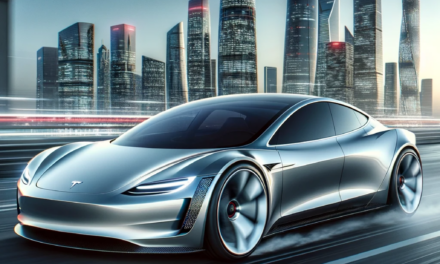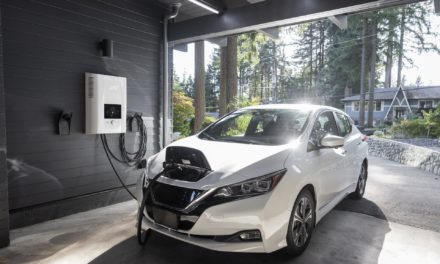Making the switch from a petrol-based vehicle to an electric one can be a huge adjustment for many. Not only do you have to get used to the way that an electric vehicle (EV) runs, but you also have to keep in mind its maintenance and charging procedures. However, there’s no doubt that investing in an EV opens the door to a seamless and eco-friendly lifestyle.
Perhaps you’ve gone a step further and scheduled a solar-powered Zappi EV charger installation in your garage. It’s certainly a worthwhile decision that will help you future-proof your home and transportation options. To help you make the most of this opportunity, here are the essential steps you need to take to prepare your garage for an EV charger installation.
Check Regulations and Permissions
Before diving into the practical aspects of installing an EV charger, it’s crucial to start with the paperwork. Make a priority of checking local regulations and obtaining the necessary permits for the installation. Take note of the government guidelines that exist to ensure the safety and compliance of EV charger installations on residential properties.
To ensure a smooth process and understand the requirements of the project, it might be best to liaise with your local authorities or utility company. Additionally, some areas may have grants or incentives for installing EV chargers, making it worthwhile to explore potential financial benefits or support.
Assess Electrical Capacity
An essential step in preparing your garage for an EV charger is to assess its electrical capacity. If you have an older home, then there’s a good chance that its electrical systems aren’t equipped to handle the additional load of an electric vehicle charger. Regardless, it’s a must to get the opinion of a professional before making any practical decisions.
Consult with an Electrician
Speaking of professionals, consulting with a qualified electrician is key in determining whether your home can safely maximise the use of an EV charger. An electrician who specialises in EV charger installation can evaluate your current electrical setup, check if any upgrades are necessary, and provide guidance on the optimal placement of the charger for efficient power delivery. They will also assess your garage’s electrical infrastructure, provide recommendations tailored to your specific situation, and ensure that the installation meets safety standards.
As electricians are familiar with local regulations, collaborating with them streamlines the permit application process for a new EV charging port. Moreover, their expertise can help you choose the right type of charger, taking into account your vehicle’s charging requirements and any future upgrades you might consider.
Select an EV Charger
When choosing the right EV charger, consider factors such as charging speed, connectivity options, and whether or not you want a smart charger. Opt for a charger that aligns with your vehicle’s specifications and your charging needs. Do note that some chargers offer adjustable power settings, a feature allowing you to balance charging speed with energy consumption. Additionally, explore smart charging options if you want the convenience of remote monitoring and control.
Take Note of the Location and Mounting
It’s also essential to conduct a careful consideration of the EV charger’s location in your garage. In particular, think about accessibility, cable length, and the proximity to your vehicle’s charging port. The chosen spot should also comply with regulations, allowing for safe and efficient charging. Consult with your electrician as well to determine the optimal location based on electrical considerations and your garage layout. Planning for future electric vehicle purchases and securing an easily accessible location can also enhance the long-term usability of the charger.
Install a Dedicated Circuit
A dedicated circuit prevents overloading existing circuits and minimises the risk of tripped breakers. Installing one can ensure you have a reliable and stable power supply for your EV charger. Your electrician will handle this aspect of the installation and determine the appropriate amperage for the dedicated circuit based on your charger’s specifications. This not only safeguards the charging process but also avoids potential disruptions to other electrical appliances in your home.
Take Care of Earthing and Grounding
Just as with other electrical installations, safety is a top priority when working on EV chargers. Proper earthing and grounding are critical components of an EV charger installation. These measures reduce the risk of electrical faults and ensure that any excess electrical current is safely directed into the ground. Your electrician will incorporate these safety features during the installation process while adhering to industry standards. This not only protects your EV charger system but also provides an added layer of safety for your home.
Implement Future-Proofing Projects
Forward-thinking is key when preparing your garage for an EV charger. Consider your future needs, especially if you plan to upgrade to a different electric vehicle. Installing a charger with adjustable power settings or one that supports various charging speeds ensures compatibility with different EV models.
This future-proofing approach saves you from costly modifications down the line. Consult with your electrician about the scalability of your installation and explore options that accommodate potential changes in your electric vehicle fleet or their charging requirements.
Investing in the installation of an EV charger is not just a practical decision. Rather, it’s a forward-looking decision for the future. After all, a well-equipped garage ensures that you’re ready for the transition to much more sustainable energy sources. In this way, properly installing an EV charger can be a commitment to sustainable living and a testament to your adaptability in an evolving automotive landscape.







